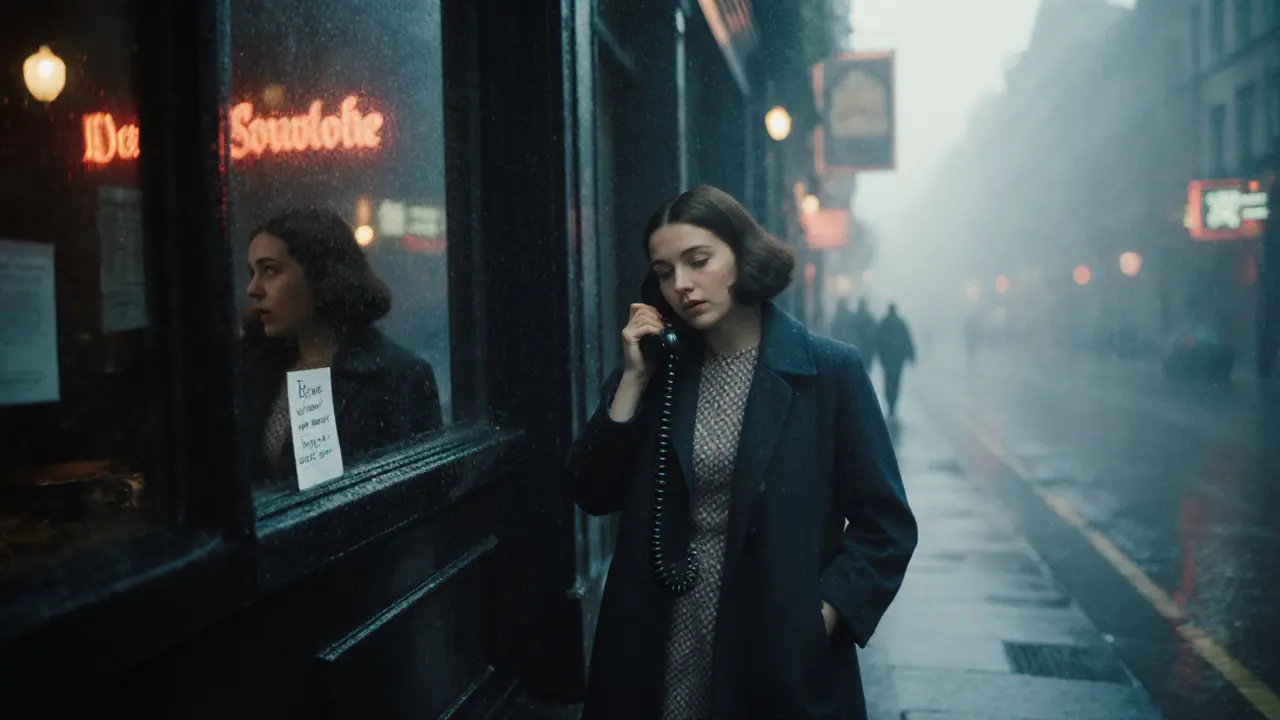London’s escort industry didn’t start with apps or Instagram DMs. It began in alleyways, back rooms of taverns, and the quiet corners of Georgian drawing rooms. What we see today-discreet profiles, encrypted messaging, and verified client reviews-is the result of over 250 years of legal shifts, social stigma, and technological change. This isn’t just about sex work. It’s about how power, privacy, and survival have shaped an underground economy that never disappeared, only adapted.
18th Century: The Rise of the Companionship Trade
In the 1700s, London was a city of extremes. The aristocracy lived in luxury, while the working class struggled to survive. Women who turned to escorting weren’t always poor. Many were educated, spoke multiple languages, and had been abandoned by families after scandal or widowhood. They called themselves ‘companions.’
These women didn’t just offer sex. They offered conversation, theater tickets, travel advice, and emotional support. A well-connected companion could earn more than a factory worker in a year. Records from the Old Bailey show cases where women were prosecuted not for prostitution, but for ‘maintaining a house of ill-fame’-a legal loophole that targeted managers, not workers.
Madams like Elizabeth Canning and Mary Moore ran networks that functioned like boutique agencies. Clients were vetted. Payments were made in cash or jewels. Some women even wrote memoirs, like ‘The Life of Mrs. Mary Lee,’ published in 1752, which detailed how she built a clientele among lawyers and MPs. This wasn’t chaos-it was a structured, if hidden, service economy.
19th Century: Moral Panic and the Contagious Diseases Acts
The Victorian era brought a wave of hypocrisy. Public morality was preached from pulpits, while private demand soared. The 1864 Contagious Diseases Acts targeted women suspected of prostitution, forcing them into humiliating medical exams. Men who paid for sex faced no penalties. The laws were repealed in 1886 after fierce public outcry led by activists like Josephine Butler.
But the damage was done. The stigma stuck. Escorting became synonymous with degradation, not survival. Women who worked in the trade were pushed further underground. Brothels were shut down. Many turned to street-based work or operated from single rooms above pubs in Soho and Whitechapel.
Still, demand didn’t vanish. Wealthy men kept their own ‘regulars.’ Some escorts maintained long-term relationships with clients-sometimes for decades. These weren’t transactions. They were alliances. One 1898 diary from a woman in Chelsea noted: ‘Mr. Pembroke comes every Tuesday. He brings books. He pays me £2. I read to him. He doesn’t touch me unless I allow it.’
Mid-20th Century: The Decline and the Underground Network
After World War II, London’s escort scene shrank. Rationing, social conservatism, and the rise of the welfare state meant fewer women turned to the trade out of necessity. But it didn’t vanish. It went deeper.
By the 1960s, a new generation of escorts emerged-often university-educated, often from middle-class backgrounds. They didn’t advertise. They relied on word-of-mouth. A recommendation from a friend of a friend was the only way in. Telephone numbers were passed in private clubs. Payment was cash, always.
London’s Soho district became a hub for discreet meeting rooms. Landlords turned spare flats into ‘appointment-only’ spaces. Clients used pseudonyms. Escorts used aliases. There were no websites. No photos. No reviews. Trust was everything.
Police raids were common. In 1972, a crackdown on 12 addresses in Mayfair led to 37 arrests. But within weeks, most operations reopened under new names and new landlords. The industry had learned to be invisible.

2000s-2010s: The Digital Revolution
The internet changed everything. In the early 2000s, forums like ‘London Escorts’ and ‘UK Companions’ began popping up. These weren’t flashy sites. They were basic HTML pages with typed bios, phone numbers, and vague descriptions like ‘discreet, professional, and reliable.’
By 2010, smartphones and encrypted messaging apps like WhatsApp made communication safer. Escorts stopped answering landlines. They stopped using their real names. They began using separate email accounts and burner phones. Some started using coded language: ‘tea’ for a session, ‘scones’ for a tip, ‘sugar’ for payment.
Platforms like Backpage (before it was shut down in 2018) and AdultWork.com became central hubs. But the real shift came with social media. Instagram, Twitter, and later TikTok allowed escorts to build personal brands. Photos were tasteful. Captions were poetic. Clients weren’t just looking for sex-they were looking for connection, aesthetics, and curated experiences.
One escort, who worked under the name ‘Eleanor’ in 2015, told a journalist: ‘I don’t sell sex. I sell an hour where you feel seen. That’s what people pay for.’ Her Instagram had 12,000 followers. She didn’t post explicit content. She posted books she was reading, coffee shops in Notting Hill, and handwritten notes. Her clients came for the vibe.
2020s: Algorithm, Autonomy, and the New Normal
Today, London’s escort industry is a hybrid of old and new. Most workers operate independently. Agencies still exist, but they’re rare-and often illegal. The majority are solo operators using platforms like OnlyFans, Patreon, or their own websites.
Payment is almost always digital: PayPal, Wise, cryptocurrency. Some use prepaid cards to avoid bank tracking. Many refuse cash. It’s too traceable.
Client vetting is stricter than ever. Background checks, video calls before meetings, and shared contact lists with other workers are standard. Safety apps like ‘Escort Shield’ and ‘Safe Escort’ let workers trigger silent alarms and share their location with trusted contacts.
Legal gray areas remain. Prostitution itself isn’t illegal in the UK, but soliciting, kerb-crawling, and running a brothel are. That means most escorts work alone, in private residences or short-term rentals. They’re not breaking the law-just navigating it.
The industry now employs thousands in London alone. A 2024 report from the Centre for Crime and Justice Studies estimated that 8,000 to 12,000 people in Greater London are engaged in some form of independent sex work. That’s more than the number of professional dancers or stand-up comedians in the city.

Why This History Matters
When people talk about escorts today, they often reduce it to a transaction. But the history shows something deeper: autonomy under pressure.
From Victorian companions who chose their clients to modern workers who build personal brands online, London’s escorts have always been entrepreneurs. They’ve used every tool available-letters, telephones, websites, algorithms-to survive, earn, and control their own lives.
The stigma hasn’t disappeared. But the power has shifted. Today’s escorts don’t need pimps. They don’t need brothel owners. They don’t need to beg for clients. They curate their own image, set their own rates, and choose who they meet.
This isn’t just about sex. It’s about who gets to control their body, their time, and their income in a world that still judges them for it.
What’s Next?
Legislation is catching up. In 2023, a pilot program in Westminster allowed sex workers to register voluntarily with police for safety support-not to be monitored, but to receive emergency resources. Early results showed a 40% drop in violent incidents among registered workers.
Some advocates are pushing for decriminalization, not legalization. Legalization means regulation by the state. Decriminalization means removing criminal penalties and treating sex work like any other service job.
For now, London’s escort industry continues to evolve. It’s quieter. It’s safer. It’s more diverse. And it’s still here-because the need for human connection, in all its forms, hasn’t gone away.
